Frederic Van Zandycke on his approach for When It Melts
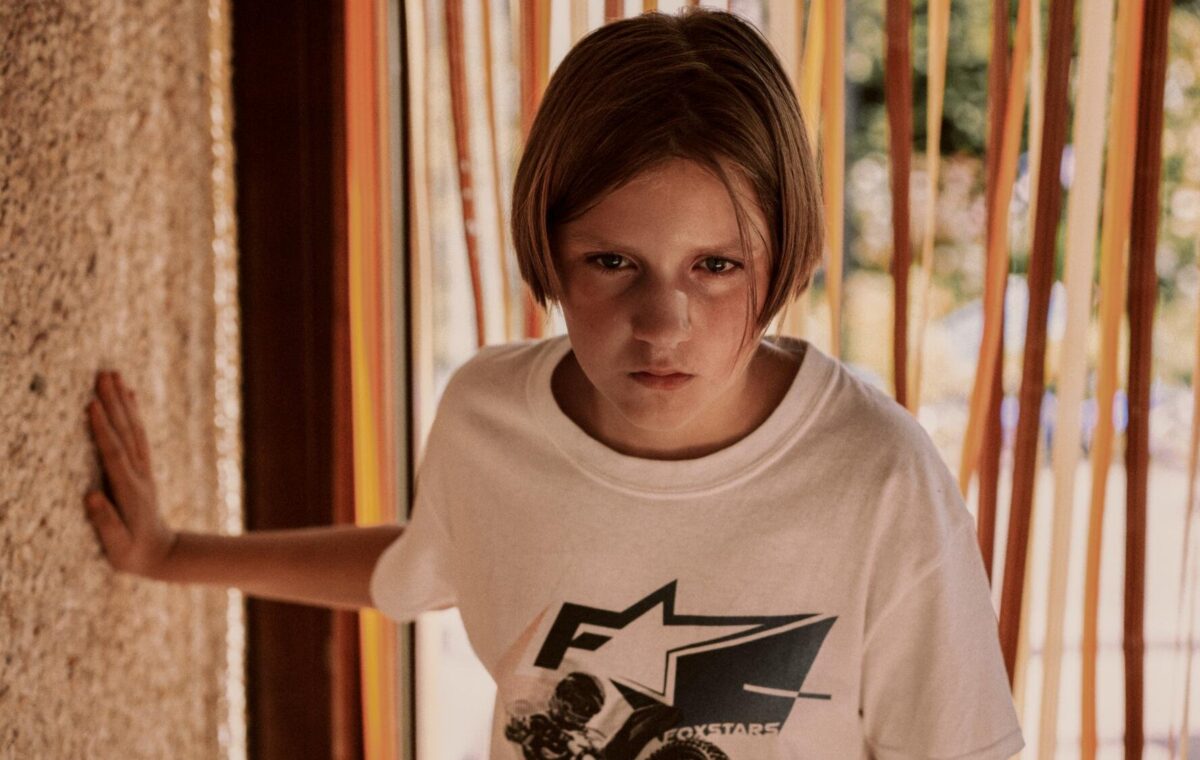
When It Melts is a harrowing look at childhood trauma and the devastating consequences and scars it leaves us with. Veerle Baetens’ directorial debut reunites her with cinematographer Frederic Van Zandycke, having previously collaborated on series Cheyenne & Lola.
Van Zandycke didn’t take the traditional route into a filmmaking career. Instead of attending film school, at 14 he reached out to people and became an all-round help on set doing grip work etc… before becoming focus puller for Maximiliaan Dierckx after a couple of years. “I started shooting really small time commercials. I was also doing my own little videos and then I started doing short films. I ended up doing my first series back in 2016,” says Van Zandycke. “I was 23 years old when I did that and I had a lot to learn as I was unexperienced. From there, I ended up second unit on other shows and then I shot Cheyenne Et Lola. That’s what director Eshref Reybrouck and I collaborated on together for the first time, though I knew him because he directed Undercover. It was really my type of thing that I liked to do and from there on it really started moving a little bit. I did another show after that and then a feature film. 2019 really pushed me up.”
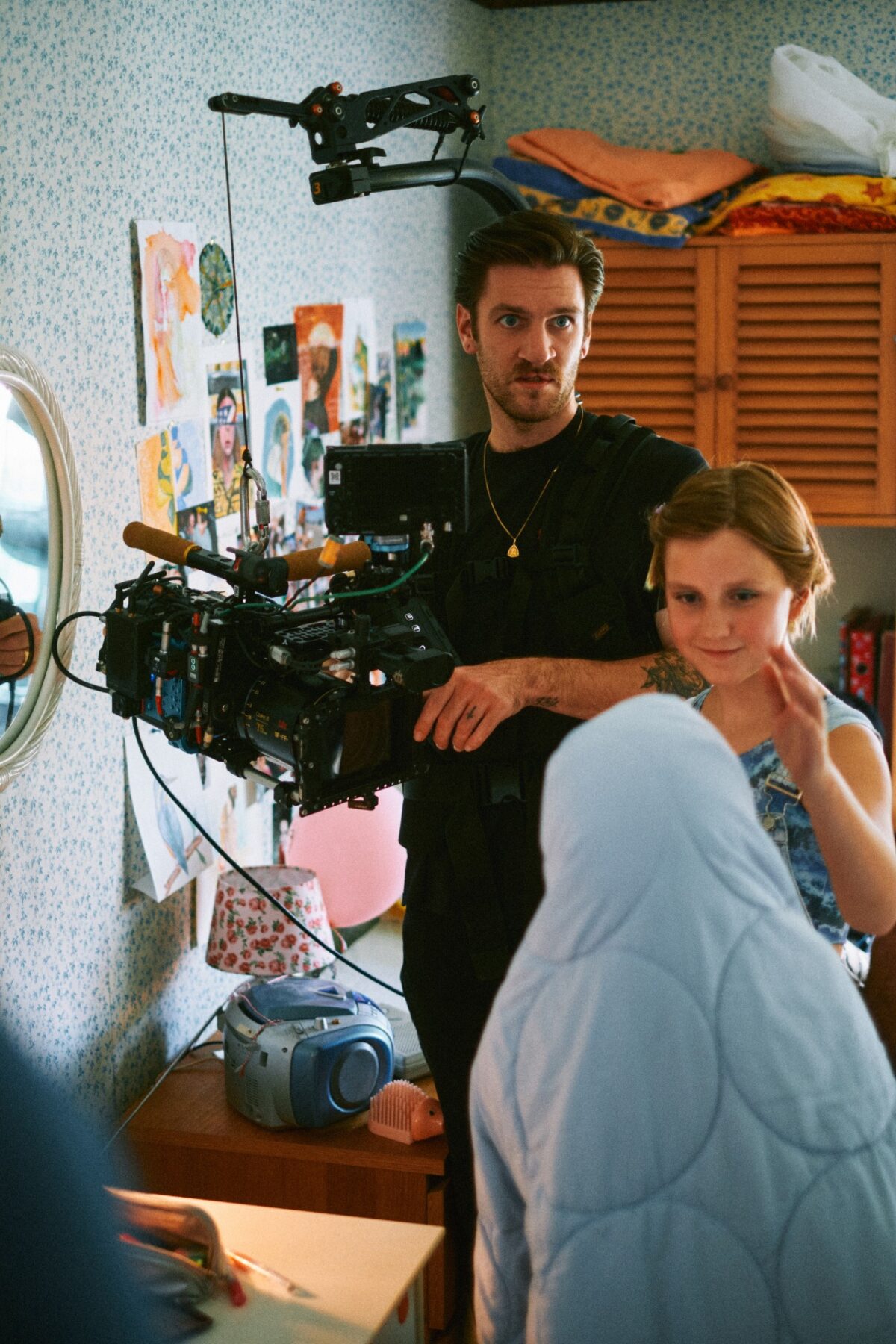
One of the leading actors in Cheyenne & Lola was Veerle Baetens, who discussed shooting a film with DP Frank van Eeden. “We got along and became friends and then Covid happened. When the series came out everyone was enthusiastic about how it looked and Veerle liked it as well,” says Van Zandycke. “Frank decided to shoot Close and so dropped out and Veerle needed to find someone else. She spoke to a number ofpeople and in the end chose me. It was quite a risk for her as I was young and I really needed to show her that I was ready. Veerle invited me to a lot of the castings with the kids. She wanted me to be there and to see how I was with kids and how I dealt with things. All of a sudden, they were doing these workshops with kids and I was just there in the background, which meant I had to get involved and dance with the kids. That’s what it took for Veerle to start to trust me. She wanted me to give workshops for the kids, which involved training with the camera and showing them how it works. She needed me to do that in order to see that I was the right person for the project. So, that was the beginning.”
Discussing his initial conversations with Baetens about the look of When It Melts, Van Zandycke notes that van Eeden had already given his opinions. “I didn’t know exactly what those were. I was worried if I came up with ideas that were completely different, as they’d already talked and I wanted to be in the right direction. I read the script and wanted to imagine some things. I really like, for example, the approach that Blue Valentine took. They did a really great job in capturing the reality of something. That was the first example that I gave and Veerle said that Frank gave exactly the same example. So, that was the first example and then others followed.”
Van Zandycke and Baetens also discussed the works of Cassavetes, particularly A Woman Under The Influence. “It has long takes and it felt real and was different for that time period. Along the way, other things came up such as Son of Saul. In that film they really stuck with long takes and close shots. They didn’t show the other person talking and they stay on one person. You could often hear the other characters, but not see them. So, we gathered all of these things that we liked about realism and long-takes and close-ups. Unfortunately, in the movie we shot it that way, but it was edited differently to what I was hoping it to be. We did a lot of long takes with those inspirations, but almost all of them were eventually cut up and they didn’t really stand. For me, that was a bitter pill to swallow, really trying to make a style for something. It was a more classical approach in the end. It’s Veerle’s movie and I want her to be happy with it. I just did a series called Ferry which is on Netflix and from the beginning to end I knew exactly what it would be and it was exactly how I intended it to be and how I shot it. I’m used to that, so this was the first time when it was very different. It was a great learning curve to not get too comfortable with what you do on set because you never know what it’s going to be like.”
When It Melts constantly cuts between the past and the present and when it came to approaching shooting both timelines, Van Zandycke again looked at Blue Valentine as a reference point. “Blue Valentine does a really great job with the flashbacks and the present and I loved it. They didn’t really do as much with the colour, but they shot on 16mm for the past and digital for the present and it was very handheld for the past and for the present it was all fixed zoom lenses,” he says. “We weren’t going to copy it, but it was a really good example of how they approached it. My initial approach was not going too much with the colour and I wanted the camera to really tell it. It didn’t end up really happening, but that was my approach and the way I shot it. It was really the same type of colours, but in the end the grading ended up being warm and cold. I may be talking against my own product a bit here, but I’m not really a fan of that, but I had to go with that and not cause a fight.”
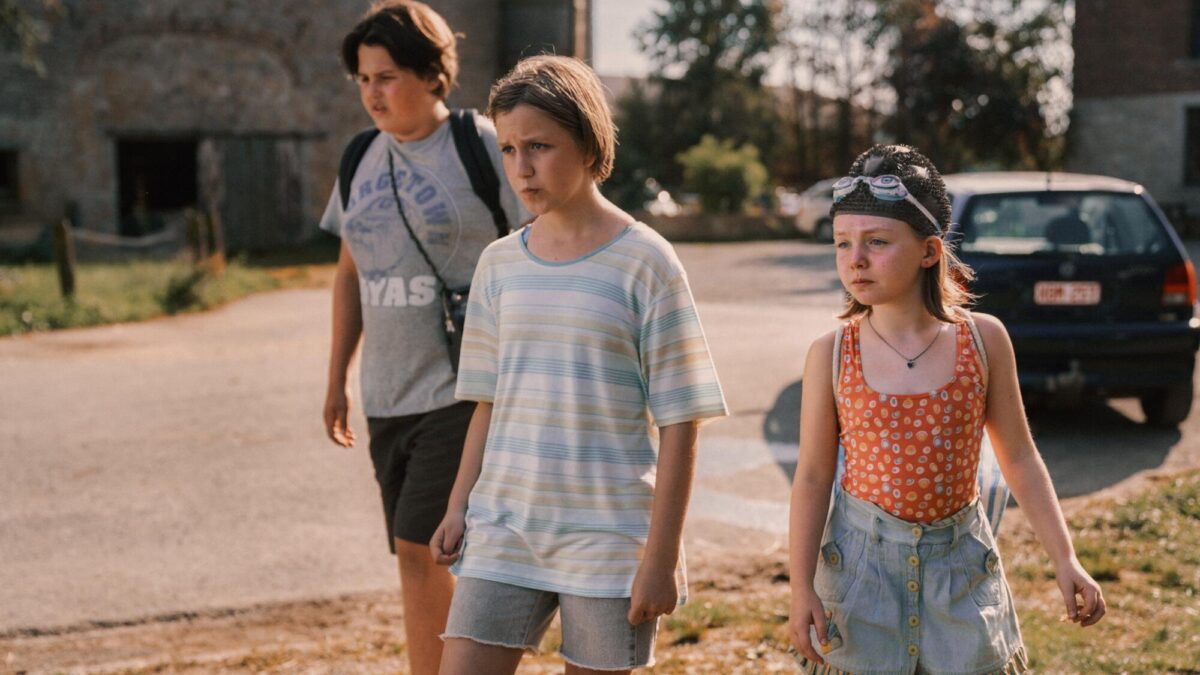
“The initial idea was over the whole movie starting wide and then narrowing it down towards the end in terms of lenses,” he continues. “That was something we did and in the beginning of the film most of it is wide and you see where it is and you have some kind of establishing sense. Then in the end when the big scene happens it’s on a 110mm lens. However, in editing they really switched scenes and so the approach of wide to closer really isn’t as apparent as we’d have liked. For the present we only shot on one lens which is the closest one which is 110mm. We didn’t really want to show where it is towards the end, especially when she arrives at the reunion party. We never show how or where she is inside of that, we just follow her along. That was one of the only one-takers that made it into the film, even though it was cut in the middle. We tried to glue that together. I really love the fact that we didn’t do establishing’s and just stuck with our character. I think the reunion scene was really the best example of what our approach really was. She starts talking to a girl and we almost show her once and then we end up on Eva again and it really narrows down the perspective. I’m very happy that made the film.”
During the flashback sequence when young Eva is harrowingly assaulted by Tim and Laurens, the camera stays on Eva. “I remember reading that scene in the script and it says young Eva starts to undress then ends up standing fully naked. I realised that we couldn’t show that, but you have to feel that,” Van Zandycke explains. “It is easy to write that scene, but how do you show this? When we were talking about the long takesI thought it would be great to do it all in one shot, from when she is standing there, to when she gets thrown on the ground. I thought about staying on her until the end because it all has to come from her performance. Veerle thought that she was up to it and so we just ended up trying it that way. It made sense to stick with her and to see it in her eyes. It may sound a bit gruesome, but I said that I think we need to see her move to really get the impression that something is happening. When you are watching it, you see that she gets almost like a shove and that was a stunt coordinator pushing her legs. There was one extra shot included in the editing, when the boys are struggling with her legs and that was one shot that made it in. It was like that from the beginningand it stayed like that. I’m really a big fan of just being with her through the whole event instead of showing the emotions of the other people. Veerle liked that idea and that’s what ended up happening.”
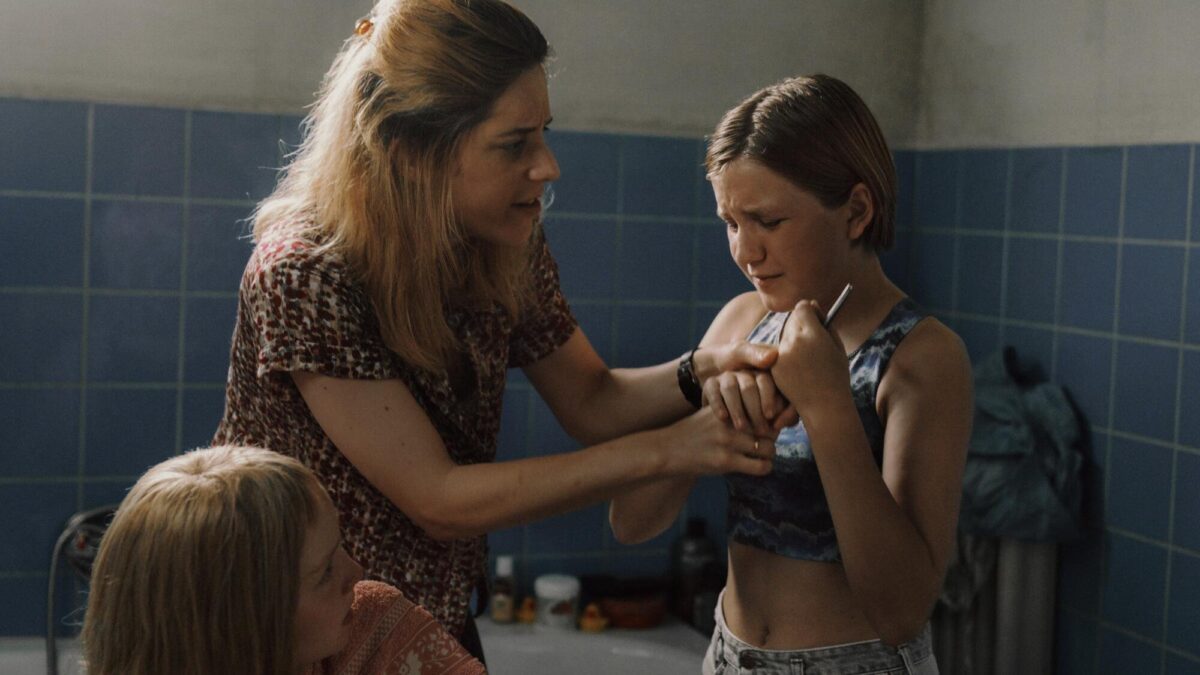
The duration of the shoot lasted 42 days, with 23 of those during the summer. “Veerle told me from the beginning that she doesn’t like lighting on the set. She wanted freedom and for the kids to be free and to shoot whatever happens. It wasn’t easy, but I understood it. She said it’s not really a visual film. I personally like to do things very stylised and this film was not like that at all. Most of our light came from outside and Veerle didn’t want it on the set. It happened a little bit, but most of it came from outside and we have the space for ourselves and we wanted the actors to be free in what they do. I wanted to still have a little bit of darkness, as I like a little bit of contrast. Veerle wanted it to be colourful and bright and still have a sense of atmosphere. Veerle gave me ideas of what she liked and they really went from left to right. I always looked back to Blue Valentine. That kind of look didn’t really make it into the film as Veerle wanted it to be really warm. Sometimes we had to creep in with a little bit of light to shape it. In the script when you have the attic scenes with all the hay, it said really sunny, so I knew I had to do something. It was the worst three days of summer when we shot those scenes and it was raining outside and you can kind of tell in the movie that we really took out all the lights we had. It was quite difficult to do as it was shot in a real attic and we didn’t have everything. If it’s dark outside then your lights really start to show. It was a battle. We had someone remove all the panes on the roof and they really made holes for the light to come through. We had to place the actors in the right places, but it was a battle.”
The summer sequences proved to be one of the most challenging aspects of the shoot due to the continual bad weather. “We had a lot of challenges throughout this shoot” explains Van Zandycke. “Starting from it being the worst summer we’ve had in a long time and the summer scenes really needed a sunny vibe. Other scenes were difficult because it required a lot of emotional investment from our kids and we had to be prepared to just shoot whatever happens because sometimes they let them improvise and see where we go. But the most difficult scene obviously was the ‘big’ scene at the end where young Eva ends up being the victim of her own friends. This was all shot in a long take starting from her trying to escape until the moment where she gets up of off the floor. On top of that the weather was very bad so we had to create the sunny vibe from scratch. This was a very intense and emotional scene so it required a closed set. We worked with small in ears for the actress and myself. We also created a special foam floor that was made to look like concrete for the actress to be a little bit more comfortable and to break the fall. Veerle was talking in a microphone guiding the actress and me through the scene, whispering little adjustments and feelings. It worked quite hypnotising at times but it worked.”
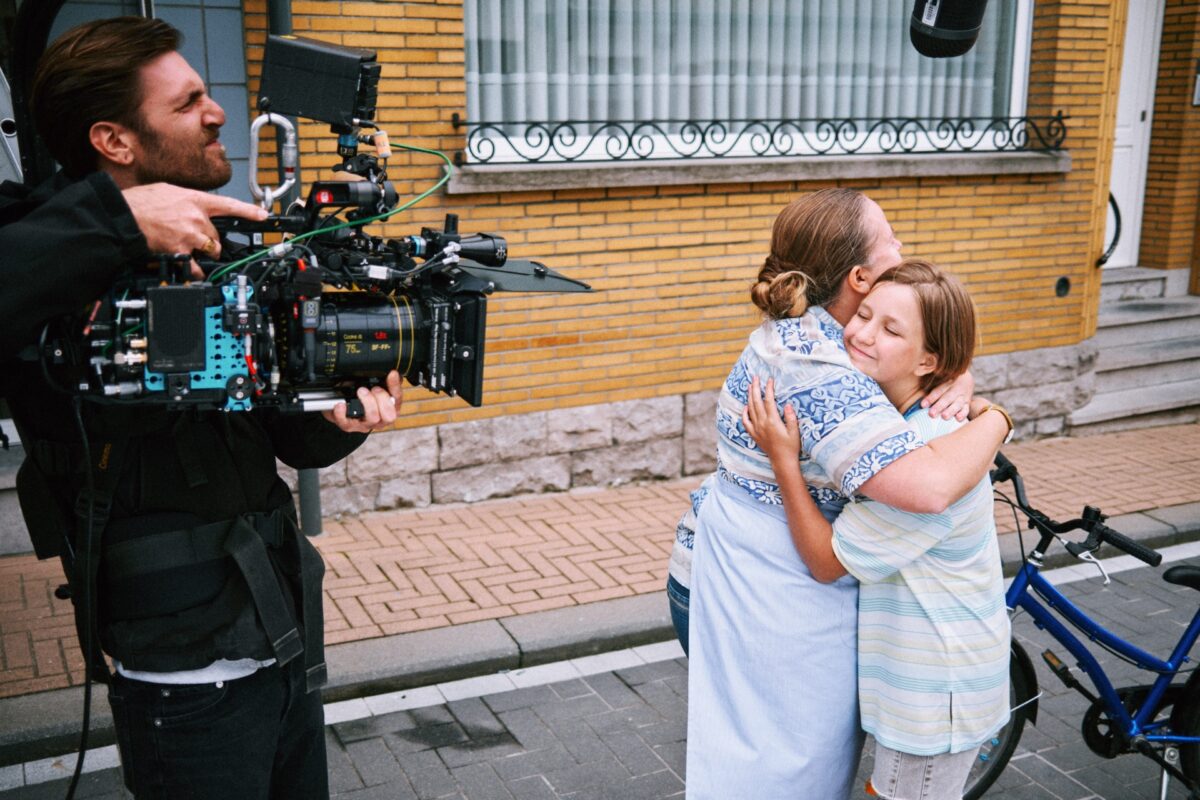
“It was an amazing group of people and it really felt like a little family. Its a generic answer but not every set has this. This was a very intense and intimate shoot with a difficult subject and working with kids always brings challenges, especially if they haven’tacted before. But everyone was super respectful and it really felt like a safe evirement and everybody, from production to technical crew was deeply motivated to make this film the right way. So, saying goodbye on the last shooting day was a little emotional for a lot of people,” Van Zandycke concludes.
By Oliver Webb
“HET SMELT”, a film cinematographed by Fred Van Zandycke (SBC) & directed by Veerle Baetens from SBC on Vimeo.
